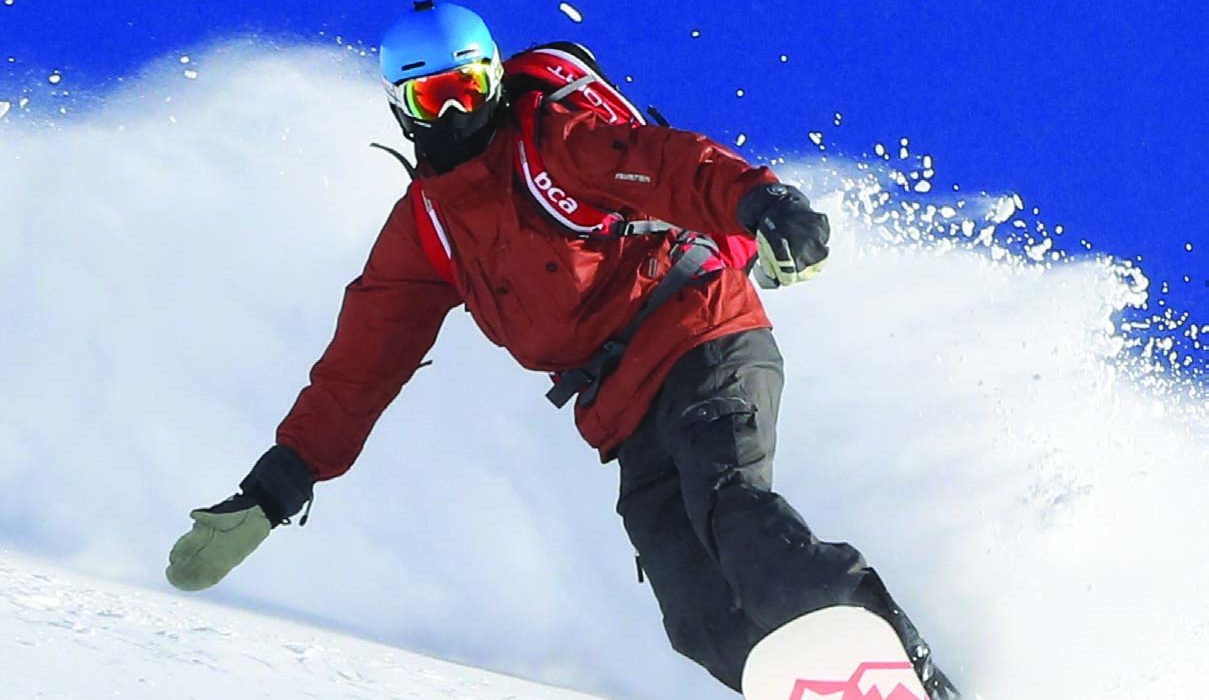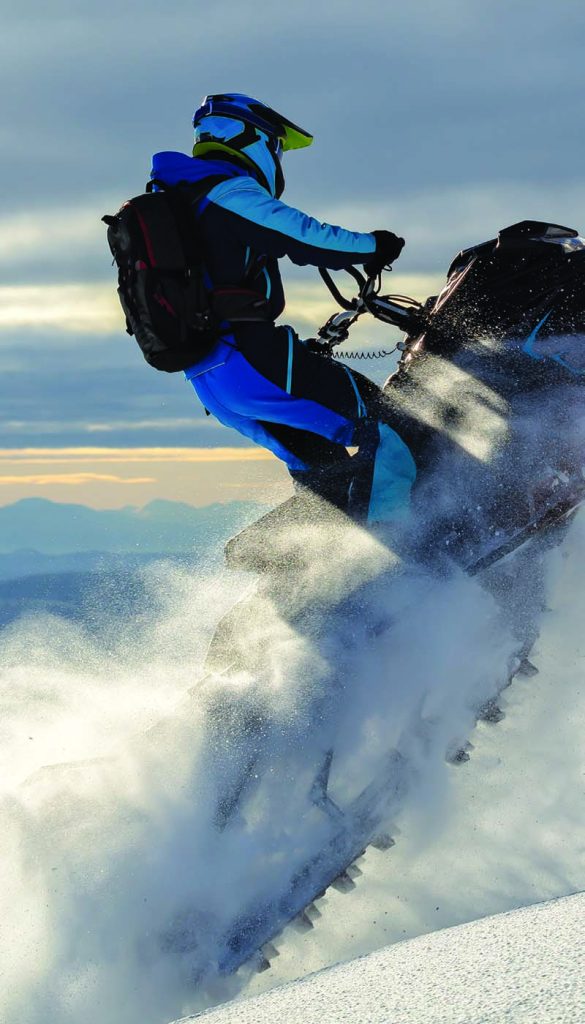Epic Adventures – Extreme Winter Sports in Heber
By Meredith Kluever
Beyond resort slopes are the fringe sports that most winter enthusiasts won’t experience or even try in their lifetimes. Here are three extreme and adrenaline pumping sports you may want to leave to the experts or enjoy in the Heber Valley.
Cat Skiing
Cat skiing offers backcountry access to skiers without needing expensive touring gear or a helicopter. The snowcat is an enclosed, fully tracked vehicle made for traversing snow. Access to backcountry glory provides the opportunity to ski or ride pristine powder.
Only advanced to expert skiers are recommended to partake in cat skiing. “We quantify that as being able to ski ungroomed terrain at a black diamond pitch at resorts out West,” explained Bekah Stevens, operations manager for Park City Powder Cats. With chutes and slopes running from 600 to 2,000 vertical feet, these runs of fresh powder are unlike anything you’ve skied in a resort.
Backcountry Snowmobiling
The backcountry calls many to its open fields of powder, including those enjoying it on snowmobiles. Adam Pulley, owner of Uinta Recreation, says there are two types of snowmobiling— the follow-the-leader type on groomed trails and the backcountry riding through deep powder excursions. “We do a real backcountry tour, which caters to people
who have previous experience and want to get off- trail,” explained Pulley. With great risk comes the great reward of experiencing nature untouched and in its most raw form.
Advanced and expert backcountry snowmobilers will know how to deal with common problems, like tipping the machine, engine flooding, overheating and getting stuck.
Danger to the snowmobilers themselves includes hitting trees or rocks, getting pinned by the 500-pound machine, and, of course, avalanches. Riders in the backcountry should never go alone and make sure they have the proper safety and survival tools like radio, shovel, extra gloves and outerwear, food and airbag pack.
There may not be a more Western sport than skijoring— think cowboys and cowgirls on skis and horses. A skilled horseback rider pulls an experienced skier with a rope attached to the horse’s saddle through a racecourse. The skijoring season mainly runs from January to March.
In skijoring, the rider on horseback steers the horse while the skier holds onto a 30-foot rope attached to the saddle. It’s sort of like water skiing, just replace the boat with a horse and the water with snow. There are many variations of the sport but the timed Western version includes riding off jumps, going through gates and grabbing rings at speeds up to 40 miles per hour. The dangers for this sport are unlike sports in the backcountry where snowpack and avalanches are your biggest worries; for skijoring, it’s speed and control. High-speed wipeouts, collisions, and falls on concrete-like packed snow are the biggest dangers to racers. But heck, since when do cowboys and cowgirls shy away from tough situations?



